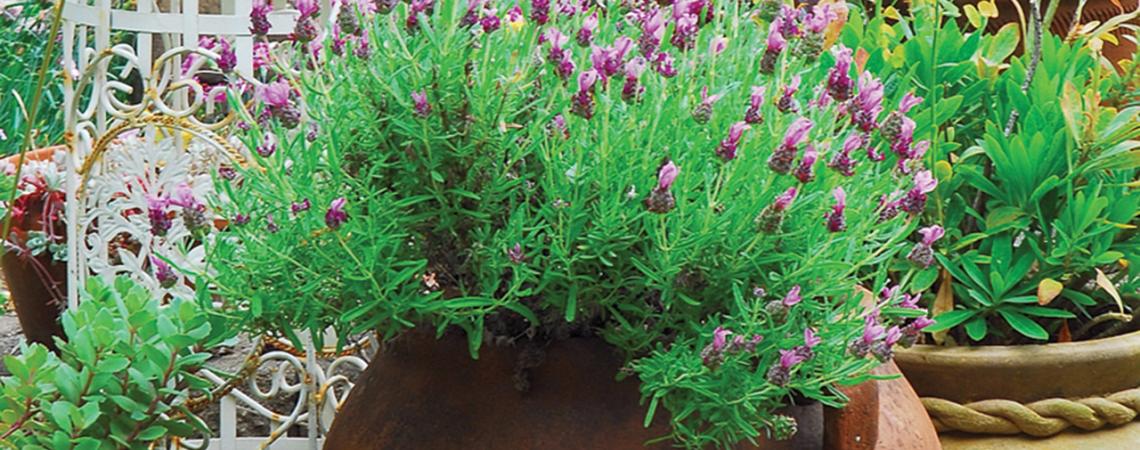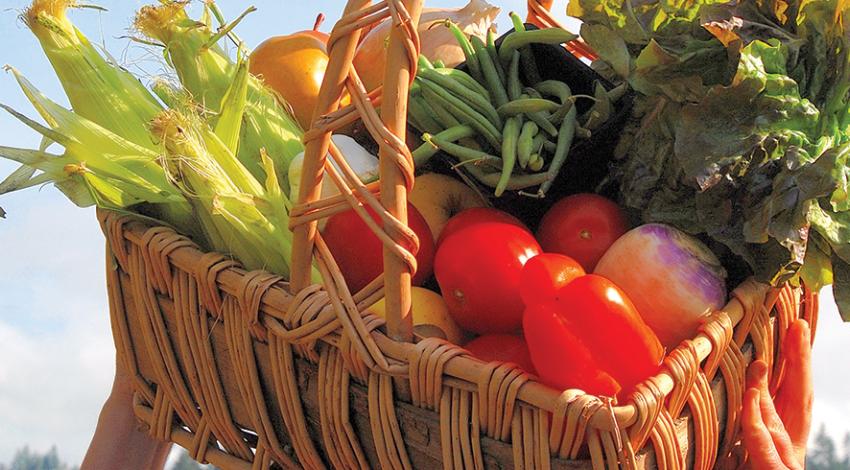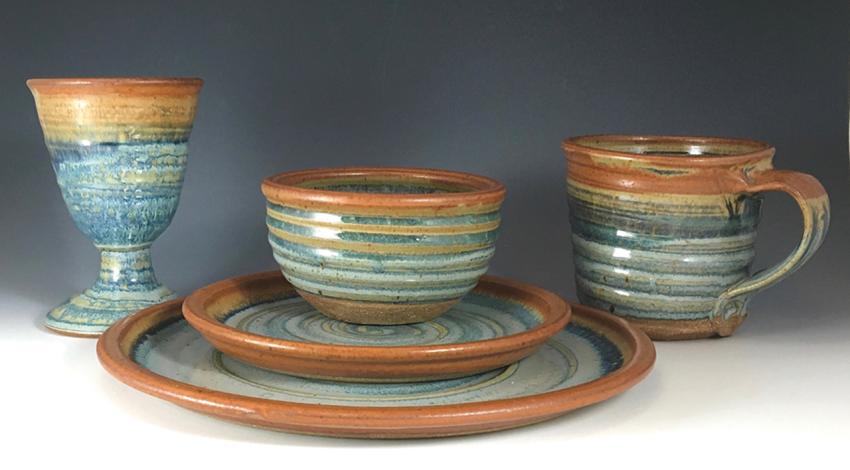Lavender is a great choice for a potted plant.
The late spring and summer season are great times to fill your outdoor living space with the lively colors, textures, and fragrances of herbs grown in containers. Potted herbs bring instant visual attraction to your outdoors, and their portability allows you to position plants where they grow and look their best.
Just about any herb can be grown in a container, as long as the pot is sized right for the plant. Most culinary herbs are prime picks, especially familiar favorites like chives, parsley, mint, oregano, sage, thyme, rosemary, and basil.
Tropical and tender herbs like lemon grass, scented geraniums, sweet bay, and lemon verbena can be grown in pots and brought in to overwinter in a sheltered area or even indoors.
Pot pointers
Whether you choose a small glazed pot, large stone urn, or even a vintage washbasin or retired wheelbarrow to plant your herbs, keep these two things in mind:
- Make sure that the pot or container is deep enough to accommodate growing roots. Bigger pots result in bigger plants.
- Your pot or container should have holes in the bottom for adequate drainage — poke or drill additional holes if you need more.
Soil and planting
Garden soil is simply too heavy for use in containers and lacks the porosity needed to grow healthy potted herbs. Instead, use a lightweight potting mix that is friable and drains well. Look for a potting mix that includes pumice or perlite, or you can add either ingredient to help loosen and aerate the final mix.
When planting your pots, fill the container two-thirds full with potting mix, then plant herbs so that the top of the plant’s root ball sits about 1 to 2 inches below the container’s rim. Fill in with additional potting soil as needed, press plants firmly in place, then water thoroughly.
Water and maintenance
Water needs vary according to the plant’s need for moisture, its location, time of year, and the pot’s size and type. Let the potting soil dry slightly between waterings for drought-tolerant and Mediterranean herbs such as rosemary, sage, and thyme; keep the mix slightly moist at all times for basil, chives, and other herbs with moderate to average moisture needs.
Always water thoroughly until you see water flowing freely from the pot’s bottom drainage holes.
Feed plants during the growing season every three to four weeks with an organic liquid fertilizer such as fish emulsion, kelp, or compost tea, or apply a slow-release organic fertilizer two or three times a year.
Removing faded flowers will encourage more blooms. Pinch back leggy stems for bushier, fuller, and more productive plants. Remember, you can always enjoy the trimming and flowering stems of any culinary herbs in the kitchen.









